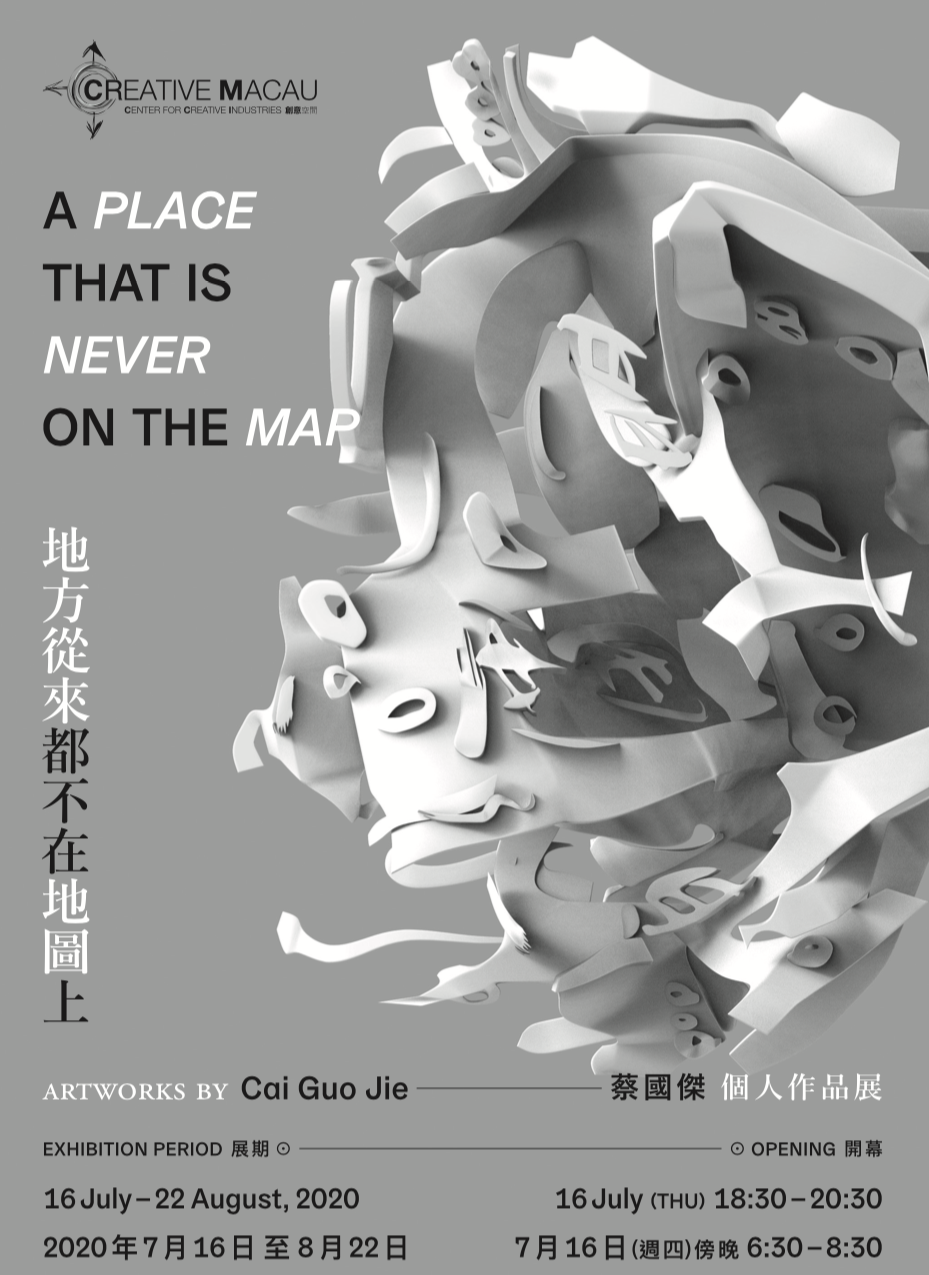From the vigorous watercolor paintings of cityscape to the solemn conceptual project on land boundary, Cai Guojie’s artworks might seem disparate at first glance, yet they are always means with which he ponders and probes culture, creations made from deconstruction and reconstruction.
Painted in vivid colors, landmarks in Macao such as St. Dominic’s Church and Rua da Cunha seem to wear the western skins in the paintings, though in fact are built of the skeleton of ancient Chinese calligraphy. Look closer, and you will discover rigorous brushwork of Chinese calligraphy art like lifting and pressing, dots and hooks, all drawn by an expressive calligraphy brush. Lines and strokes of ever-changing strength and speeds run across the paper, shapes and glyphs melting into each other, ultimately forms a picturesque vista. There, Cai masterfully injects qiyun, or spirit resonance, the raison d’être of Chinese painting into watercolors, not only in virtue of aesthetics, but also of an ambition in rendering the unique architectures and scenery of Macao in the Chinese brushstroke paradigm. At the heart of it lies the innovative spirit of the ideographic Chinese characters making. To put it precisely, Cai always writes, not paints, his watercolor pieces; they are sigils of culture.
Trained in installation art, Cai is also fascinated by deconstruction and reconstruction. In the painting installation ‘St. Dominic’s Church’, he decodes the lines and color patches within the painting and reproduces in three-dimensional space a new church, like a strange stainless-steel bonsai. Lines in disarray, layers cut out and reorganized, the appearance of the object is shattered. In this grotesque anatomy, his artistic statement comes to light forthright.
By the same token, the installation ‘Quan’ aims to rebuild the understanding of land. Since 2004, Cai has been working on the ‘Half-Field Plan’ project, which investigates land division and boundary in the capitalist context. He argues that in theory, when a land is divided into two, the boundaries of either side do not overlap but simply juxtapose. That is to say, between the two juxtaposing boundaries exists an ‘interspace’ that forever approaches to zero. Like the untouched land at the verge of the world, this infinitesimal space is always a no-man’s-land and subjects to no power whatsoever. Previously in the ‘Half-Field Plan’, Cai, served as a boundary manager, auctioned these spaces to participants and sparked a discussion on land ownership and use right. Here he becomes a worker who collects dusts and grits between the Portuguese calçadas outside the gallery, with which he welds into a weight, the essential measurement tool for scales in ancient China. Interestingly, ’Quan’, or weight, can be literally translated as ‘power’ or ‘right’ in Chinese. Now the trivial dirt between tiny cracks can actually hold sway. Perhaps, the purest form of power can only be found in the most marginal space where no one touches.
Always cocooning reason with beauty, Cai Guojie’s artworks are vessels of his unwavering position for culture, which he holds dear and never compromises.
